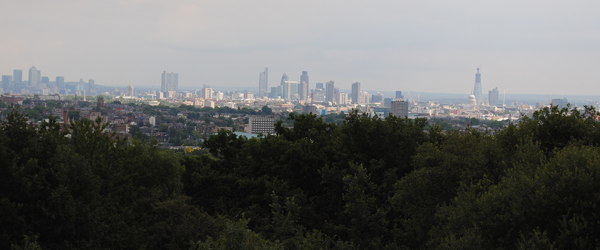We’ve decided to tell William Marshal’s fascinating story over two weeks – tune in next Monday for part II, the latter part of Marshal’s life, when the connections of Marshal to London are more fully spelt out …
A knight who served five English kings and rose to become a significant force in late 12th and early 13th century England, William Marshal was one of the towering figures of his time and seen by many as a paragon of what a knight could be.
 Marshal – who died 800 years ago last May, was born in about 1147, the second son from the second marriage of a minor noble, John Marshal, during the 15 year conflict between King Stephen and his cousin, the Empress Matilda.
Marshal – who died 800 years ago last May, was born in about 1147, the second son from the second marriage of a minor noble, John Marshal, during the 15 year conflict between King Stephen and his cousin, the Empress Matilda.
Marshal had ascended to become Marshal to the King in the court of King Henry I but during the subsequent conflict which erupted after the king’s death in 1135 had, like many, attempted to exploit the situation for his own benefit (he is said to have initially supported Stephen but was, however, among the Empress’ forces during a battle at Wherwall in 1141, during which he lost an eye and suffered significant injuries after the lead roof of a church melted onto him).
Late in King Stephen’s reign, he personally attracted the ire of the King upon himself by building a new fortified outpost, Newbury Castle, to the west of London, leading the king to marshal his forces against him. Marshal apparently begged for a truce ahead of the surrender of the castle and it was here that William enters the story, offered up as a hostage for his father.
But John Marshal decided, having handed over the boy, that he would not surrender and abandoned William to his fate. Stephen, angered at the deception, ordered the boy William to the gallows but, in what was a seminal moment in William’s childhood, the king relented and Marshal was spared – the story goes that it was William’s innocence which stayed the King’s hand.
King Stephen eventually won the day – although John Marshal escaped, leaving his son with the King. William was to remain a captive for more than a year – only after peace was agreed between King Stephen and Empress Matilda in 1153 was he to return to his family.
Little else is known of Marshal’s early childhood but in around 1160, at the age of about 13, he went to live in the household of William of Tancarville in Normandy – a distant relative – to acquire skill at arms in order to become a knight. He was knighted at the age of about 20 by Tancarville and was soon involved in fighting to protect Normandy’s borders but shortly after that, found his time under Tancarville’s patronage at an end (although the exact reasons why he was let go are unclear).
Rather than returning to his family in England, the penniless Marshal instead spent the next year or so travelling Europe on the tournament circuit to try and make some money and indeed had some success before he did eventually return to England and enter the house of his uncle, Earl Patrick of Salisbury. When Patrick and his men were called up to campaign with King Henry II in south-western France in early 1168, William was among his men.
In April, William was with the Earl serving as a guard for King Henry II’s wife, Eleanor of Aquitaine, when they were attacked. The Queen hastened to safety while Patrick and his men held back the attackers but during the fighting, the earl was killed while Marshal, despite his skill, was eventually run through the thigh was lance and taken prisoner.
Recovering from his wound, Queen Eleanor eventually paid a ransom for his release and he was subsequently offered a place in her retinue in what was to his first post in a long life of royal service. After just a couple of years in the Queen’s service, her husband, King Henry II, appointed William as tutor-in-arms to his son and heir, Henry “the Young King” who had already been crowned at Westminster Abbey despite his father still holding the reigns of power.
When Henry rebelled against his father in 1173, William remained among his men, and, after an uneasy peace between the Young King and King Henry II was restored, William was with the young Henry when he spent three years on the tournament circuit from 1176 to about 1179. The Young King and his men saw considerable success in tournaments before William branched out on his own, his skill with weaponry bringing him both fame and wealth in his own right to the degree that by the early 1180s, he was regarded as one of Europe’s greatest knights.
With thanks to Thomas Asbridge’s The Greatest Knight: The Remarkable Life of William Marshal, the Power Behind Five English Thrones…
An effigy believed to be that of William Marshal in the Temple Church, London. PICTURE: Michael Wal (licensed under CC BY-SA 2.0)
 As well as an oratory or chapel, the hospital, initially founded on eight acres of farmland, is believed to have included houses for lepers, a master’s house, and quarters for a chaplain, clerk and servant. A chapter house was added in the early 14th century.
As well as an oratory or chapel, the hospital, initially founded on eight acres of farmland, is believed to have included houses for lepers, a master’s house, and quarters for a chaplain, clerk and servant. A chapter house was added in the early 14th century.










